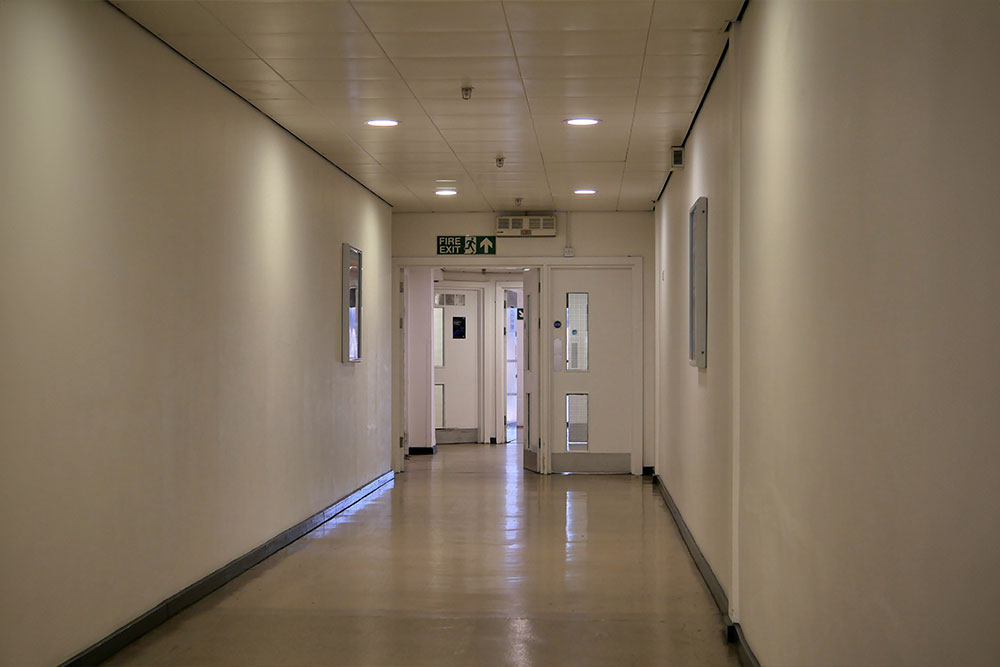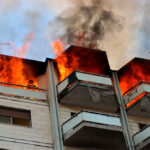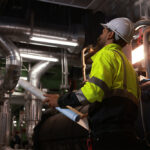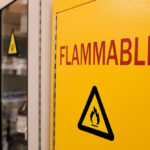
The Care Quality Commission is paying more attention to how fire risks in care homes are being managed, and for good reason.
Care homes are typically large, complex buildings, many of which predate modern fire safety standards. Evacuations are also challenging when residents have mobility issues. Because of these risks, care home managers must put in place the necessary plans and control measures to ensure fire safety.
This guide outlines the fire safety regulations relevant to care homes and offers practical steps for managing fire risks.
Key Takeaways
- Care homes must comply with the Regulatory Reform (Fire Safety) Order 2005 and have an active fire risk assessment.
- Managing fire risks in care homes involves preventing fires, containing and controlling fires, and ensuring safe evacuations.
- Staff training and regular fire drills are essential to ensure all employees can respond quickly and effectively in case of a fire.
What the Law Says
Care homes must comply with the Health and Social Care Act Regulations 2008, which require compliance with the Regulatory Reform (Fire Safety) Order 2005.
The Fire Safety Order places duties on the “responsible person” to ensure the care home meets fire safety standards at all times.
The “responsible person” is the individual with control over the premises. For care homes, this is usually the employer or manager.
The Regulatory Reform (Fire Safety) Order 2005
Under the Regulatory Reform (Fire Safety) Order 2005 (FSO), the responsible person must ensure fire safety risks are eliminated or reduced to safe levels.
The most crucial duty is conducting a fire risk assessment for your premises. A compliant fire risk assessment will ensure all fire hazards are identified and the necessary control measures are in place.
Other duties include:
- Establishing and testing evacuation plans
- Keeping evacuation routes clear
- Ensuring fire safety equipment is in place and well-maintained
- Providing staff with relevant fire safety training and information
- Informing residents and visitors of fire safety measures
- Regularly reviewing and updating the fire risk assessment
Fire Risk Assessments
A fire risk assessment needs to consider all fire risks. It should follow a set structure:
- Identify fire hazards (things that can start a fire)
- Identify people at risk
- Evaluate fire risks (the potential harm)
- Record findings, plan control measures and train staff
- Review and update
Responsible persons must ensure fire risk assessments happen, but they shouldn’t necessarily do the work themselves.
Fire risk assessments take extensive knowledge, experience and training – qualities collectively known as “competence.” It’s safer to appoint a competent third party to carry out and review your assessment because (with your input) they’ll have the expertise necessary to identify all fire risks and implement effective safety measures.
Managing Fire Safety Risks in Care Homes
Fire risk describes the potential for that fire to harm people. It’s a separate term to fire hazard, which describes things that can start a fire.
For example, faulty equipment is a fire hazard because it could generate the heat needed to spark a fire. A blocked escape route is a fire risk because it could prevent someone from escaping a burning building before being hurt.
So, successfully managing fire safety risks in care homes covers:
- Preventing fires from starting
- Containing and controlling fires that do start
- Ensuring staff can oversee quick and safe evacuations
Your fire risk assessment will help you decide what plans, procedures and physical precautions are needed to meet these duties.
For more detailed guidance on managing fire risks, including evacuation procedures and fire risk assessments in care homes, you can refer to the government’s official guidance on fire risk assessment in residential homes.
Fire Prevention
Preventing fires in care homes starts with identifying potential ignition sources and removing them or reducing the risk of them starting a fire.
Statistically, most fires start in the kitchen, so focus here. Appliances and unattended cooking are common fire hazards, so ensure staff are aware of the risk and able to extinguish cooking fires safely.
Faulty electrical equipment is another widespread fire hazard. You should arrange for regular portable appliance testing (PAT) to confirm equipment is safe.
But working equipment can also be a fire hazard. Be particularly mindful of portable heaters when residents are feeling the cold. Place heaters away from combustible materials on level surfaces and never leave them unattended.
You should also implement a consistent no-smoking policy. If residents or staff do choose to smoke, it must be in a designated area with clear signs and facilities to safely dispose of finished cigarettes.
Containing and Controlling Fires
While preventing fires is the priority, it would be impractical to eliminate all fire hazards from your care home. So, you need measures in place to contain and control any fires that might happen.
Fire doors and compartmentation are vital to stopping the spread of fire and smoke, especially in a care home where residents need more time to escape.
Installing and maintaining proper firefighting equipment, such as fire extinguishers, ensures that staff (with the right training) can tackle small fires before they spread.
Regular testing and inspection of fire safety equipment, including fire doors, is also a requirement under the FSO. You must appoint competent people (or train a team member) to regularly check your fire doors, extinguishers and any other safety measures.
Safe Evacuations
Evacuating residents safely is one of the most challenging aspects of fire safety in care homes.
Many residents will have mobility issues or require assistance. Some will also have hearing impairments. So you need to consider how you’ll alert everyone to a fire and what type of evacuation is safest for your care home:
- Simultaneous: Everyone leaves the building as quickly as possible
- Phased: Evacuation order follows risk level, with those most at risk going first
- Horizontal: Residents move horizontally to fire-resistant compartments on the same floor
You must also account for residents’ specific needs. Vulnerable residents might need personal emergency evacuation plans (PEEPs).
Once plans are decided, they should be tested with fire drills. Fire drills give you an opportunity to identify problems without putting anyone at risk. Staff also need opportunities to rehearse evacuation plans when the stakes are low. Drills will help prevent panic and confusion should a real evacuation be necessary.
Fire exits must be signposted, as visitors might not be familiar with the layout of your building. You must also keep escape routes unobstructed so everyone can move through them freely. Moreover, fire doors should never be blocked or propped open or evacuations can be blocked by flames and smoke.

Training Staff
Staff training is vital to managing fire safety risks. All employees should be trained in identifying fire safety hazards, using firefighting equipment and evacuating residents. This training should be updated regularly, and all new staff must receive it as part of their induction.
You should also appoint one or more employees as fire wardens, depending on the size of your care home. Fire wardens can take on most everyday fire safety duties, provided they’ve been given the necessary training.
Fire Safety Courses
Managing fire risks in care homes is an ongoing challenge, and ensuring that your staff are fully trained is essential.
Our online Fire Safety Courses support compliance with the Regulatory Reform (Fire Safety) Order 2005 and will help make your care home safer.
You can choose from fire safety awareness to more advanced courses that train your team members to handle specific fire safety duties, including fire door inspection and taking on the responsibilities of a fire warden.
About the author(s)

Jonathan Goby













































































































































































































































































































































































































































































































































































































